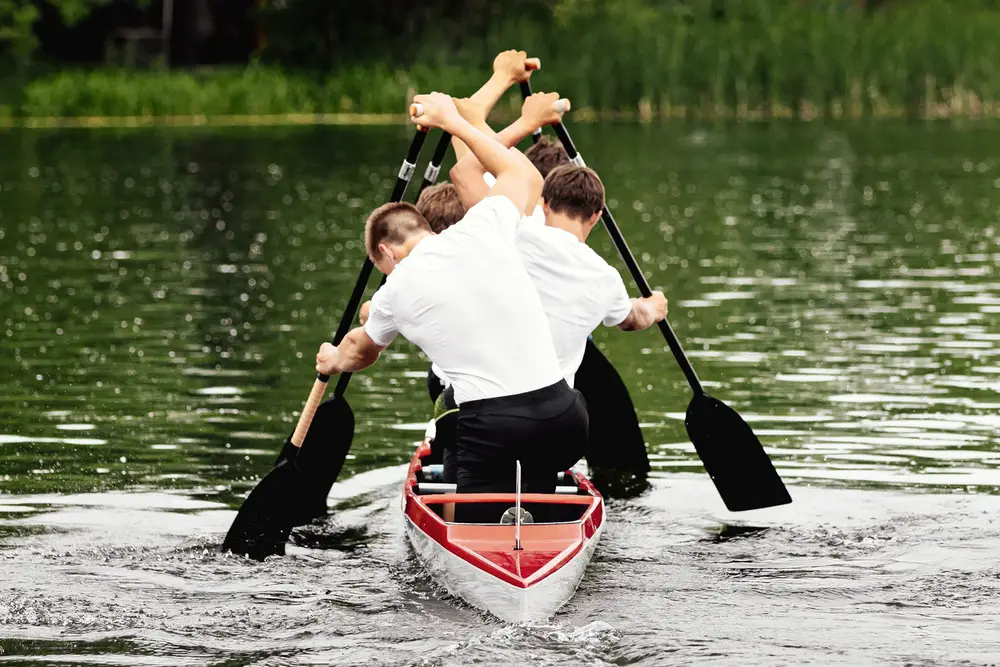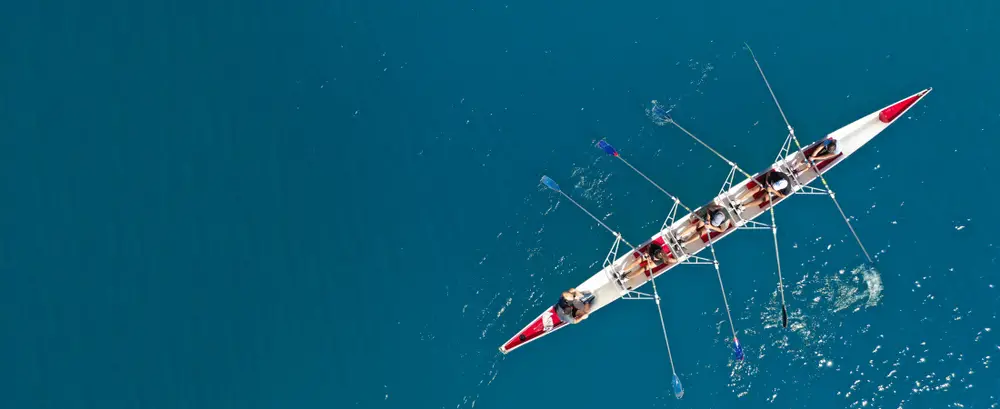Speed canoeing is a water sport that combines strength, technique and endurance. Competed in calm waters, such as lakes and rivers with little current, this sport stands out for the high speed achieved by the athletes.
Speed canoeing competitions are often held at international events, such as the Olympic Games, and attract athletes from all over the world. And for the sport to be practiced in the best way, it has very specific rules.
With this in mind, we’ve brought you a special article with the rules of speed canoeing for you to learn about. These rules cover everything from the structure and dimensions of the competition area to details on infractions and penalties.
So check out the main rules of speed canoeing!
Open your Betano account and get up to 1,000 reais in bonuses.
PIX payments, live games and super odds!Click here to open your account!

Speed canoeing rules: complete list
- Area;
- Duration;
- Scoring;
- Players;
- Equipment;
- Training;
- Infractions.
Speed canoeing rules: area
The structure and dimensions of the speed canoeing area are essential for holding competitions. The area is generally a calm body of water delimited by buoys that mark out the lanes.
Each of these lanes is 9 meters wide, and the total course is 200 meters, 500 meters or 1000 meters long, depending on the race.
Buoys are then placed at regular intervals along the course to help athletes stay in their lanes. The width of the total course can vary, but it must include at least 9 lanes, giving a minimum width of 81 meters.
In addition, the depth of the water must be sufficient for the athletes to compete without the risk of touching the bottom with their paddles or kayaks.
Speed canoeing rules: competition duration
The duration of races in speed canoeing can vary according to the distance covered. For 200-meter races, for example, the duration is short, often under a minute for the best athletes.
The 500-meter races last between one and a half and two minutes, while the 1000-meter races can last between three and four minutes.
Times often vary according to weather conditions and the state of the water. It is important that races are started and timed accurately to ensure that all athletes have the same conditions of competition and that it is fair.
The use of electronic timing systems is quite common in speed canoeing, not least to ensure better accuracy of the times recorded.
Speed canoeing rules: scoring
According to the rules of speed canoeing, scoring is determined by the order in which the athletes finish. The winner, then, is the athlete who crosses the finish line first.
There are no cumulative scores during the race, meaning that the final classification is based exclusively on the time it takes each athlete to complete the established distance.
In tournament format competitions, athletes can accumulate points in different heats to determine who the finalists will be. Each position has a corresponding score, and the athletes with the most points are the ones who advance to the finals.
Speed canoeing rules: players
In speed canoeing, events can be contested both individually and in teams.
- Individual: individual competitions are known as K1 or C1, with “K” referring to kayak and “C” to canoe.
- Team: team races then include K2, K4, C2, and C4, with the numbers indicating the number of athletes in the boat.
Canoe athletes paddle kneeling, while kayak athletes sit. Each team or individual athlete competes in their own lane, and coordination between team members is extremely important for success in K2, K4, C2 and C4 races. Synchrony and paddling rhythm determine the efficiency and speed of the boat.
Speed canoeing rules: equipment
The equipment used in speed canoeing is regulated to ensure a level playing field between competitors. The kayaks and canoes must meet the size and weight specifications set by the International Canoe Federation (ICF).
K1 kayaks, for example, have a maximum length of 5.2 meters and a minimum weight of 12 kg. Paddles must also follow specific rules in terms of size and shape.
It is worth noting that any modification to the equipment that gives the athlete an advantage could lead to disqualification. Athletes must also wear approved life jackets, but they can be dispensed with in elite competitions. This is because swimmers are required to have high-level swimming skills.
Speed canoeing rules: training
Training for speed canoeing involves a combination of strength, endurance, technique and strategy, so a lot of preparation is needed beforehand. Athletes spend countless hours in the water, always looking to improve their paddling technique and acquire the endurance needed to maintain high speeds over long distances.
Training on dry land, such as weight training and cardiovascular exercises, also takes place and is extremely essential for developing muscular strength and endurance.
Mental preparation is equally important when training for speed canoeing. Athletes must be able to maintain concentration and calm under pressure, especially in short races.
Strategies for starting, maintaining pace and final acceleration are practiced repeatedly to enhance performance.
Speed canoeing rules: infractions and penalties
Check out the main infractions in speed canoeing:
- False start: happens when an athlete starts paddling before the official start signal;
- Lane change: when an athlete leaves their lane and interferes with another competitor’s performance;
- Obstruction: is declared when an athlete intentionally blocks or impedes the progress of another competitor.
Penalties for these infractions range from warnings to disqualification. False exits can result in a warning for the first occurrence and disqualification for repeat offenses.
Lane changes and obstructions can lead to immediate disqualification, depending on the seriousness of the infraction and the impact on other competitors.

Speed canoeing rules: complete list
- Area;
- Duration;
- Scoring;
- Players;
- Equipment;
- Training;
- Infractions.
Speed canoeing rules
Now that you know the rules of speed canoeing, take the opportunity to check out our other content on this and many other sports. Here you’ll find news, lists and other special articles all about the sports world!



